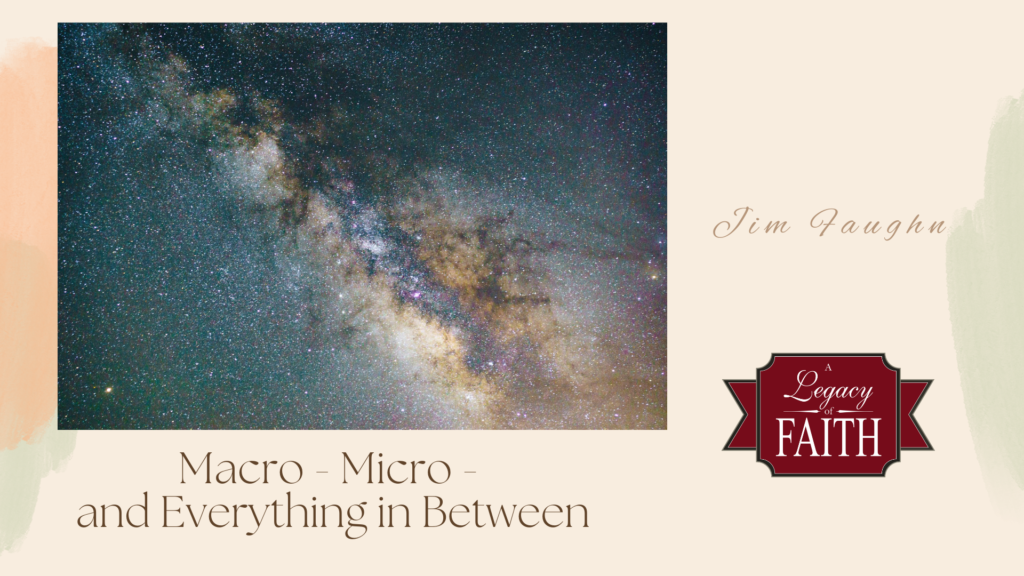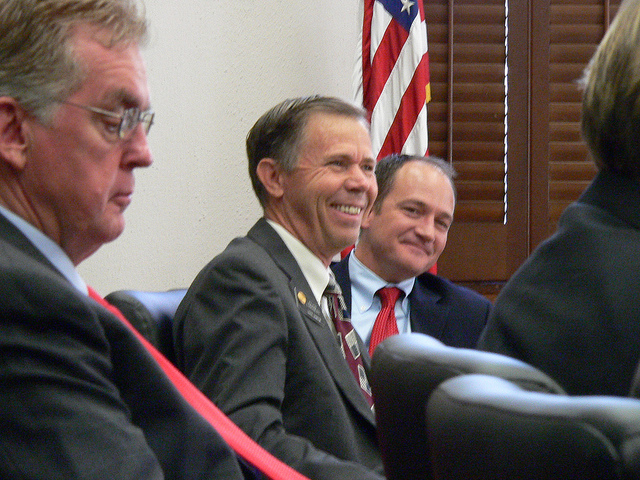Macro – Micro – and Everything in Between
I won’t go into any details, but something I heard recently caused me to do a little research about what is known as The Hubble Space Telescope. Specifically, what intrigued me was some of the things that scientists have learned from this telescope that was launched into what is called “low earth orbit” in 1990.
During my admittedly limited research, I came across this information from NASA:
One of the most fundamental questions in astronomy is that of just how many galaxies the universe contains. The landmark Hubble Deep Field, taken in the mid-1990s, gave the first real insight into the universe’s galaxy population. Subsequent sensitive observations such as Hubble’s Ultra Deep Field revealed a myriad of faint galaxies. This led to an estimate that the observable universe contained about 200 billion galaxies.
The new research shows that this estimate is at least 10 times too low. (science.nasa.gov)
That bit of information led me down another and totally different path. Instead of focusing on the enormity of the universe, I began to wonder about things that are very small. I began to wonder how many cells the human body has. Here is what I found in one source:
According to a new analysis of more than 1,500 papers, the average adult male human has around 36 trillion cells — that’s 36 followed by 12 zeros — while adult females have 28 trillion and 10-year-old children have about 17 trillion. (livescience.com)
An individual galaxy and an individual cell have some things in common. Each one has multiple components and, at the same time, each one is part of something much larger. Along with that, there is some sort of pattern or order that governs them and makes them function properly.
I am a long, long way from being a scientist, but, at least at this point in my life, I do have a functioning brain. It makes no sense to me that all of what we see with our eyes and/or by using the most sophisticated telescopes and microscopes “just happened.”
Instead, the opening pages of The Bible give us some information about both the macro (big picture) and micro (small picture) of the universe and everything in it. In fact, the very first verse tells us Who made all of this happen.
In the beginning God… (Gen 1:1)
Some who read this may be thinking that I do not know enough about science to express any opinion on this. I will readily admit that.
For that reason, I thought that I would conclude this with somebody with a lot more credibility in this area than I have. Whenever the process of pasteurization is mentioned, we are, in effect, honoring the renowned scientist for whom the process was named – Louis Pasteur.
Even though Pasteur died over a century ago, he and his work are still very highly regarded in scientific and medical circles. I thought that you might find a couple of his thoughts interesting.
A bit of science distances one from God, but much science nears one to Him.
The more I study nature, the more I stand amazed at the work of the Creator.
AUTHOR: Jim Faughn



